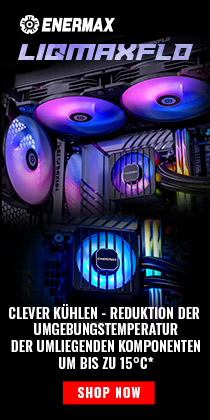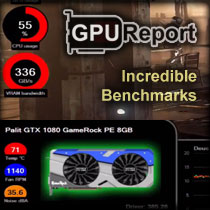DeepCool LP360
This DeepCool liquid cooler combines impressive aesthetics with exceptional cooling efficiency (and overall high cooling performance). It features lighting on both the fans and display-equipped water block, while maintaining the capability to cool the most powerful consumer desktop processors available. This is achieved without performance compromises and even with considerable headroom to spare.
For testing, we have the DeepCool LP360 in the popular 360mm format. After reviewing its detailed specifications (including socket support and dimensional measurements), let’s examine its construction details.
| Basic parameters | DeepCool LP360 | |
| Supported sockets | Intel LGA 1851, 1700, 1200, 115x; AMD AM5, AM4 | |
| Build type | liquid (AIO) | |
| Height (w/ fans) in mm | 52.3 | |
| Length (w/ fans) in mm | 400 | |
| Width (w/ fans) in mm | 120 (125,4 with fan connectors) | |
| Height of the liquid block in mm | 62.7 | |
| Length of the liquid block in mm | 77.4 | |
| Width of the liquid block in mm | 90.5 | |
| Tube length in mm | 445 | |
| Daisy chaining of fans | yes | |
| (A)RGB elements | yes | |
| Number of fans and their format | 3× 120 | |
| Weight (with fans) in g | 1570 | |
| Approximate retail price in EUR | 140 |
Details of the DeepCool LP360 cooler
The 400mm-long radiator houses three 120mm fans. Their combined 360mm width gives the cooler its model designation (LP360).
The radiator fans, model FD12 ARGB, feature a 120mm format with 600-2400 RPM speed range and distinctive “milky” impeller material. This translucent material effectively diffuses light – a key design aspect for DeepCool’s extensive (A)RGB LED implementation. The lighting coverage is truly comprehensive, with the entire impeller surface serving as a light-emitting area.
The aerodynamic design incorporates significantly curved leading edges, though not as extreme as DeepCool’s FC120 fans. The FD12 ARGB’s blades are shorter overall, less flexible, and consequently less prone to rumbling (reducing low-frequency noise), though tonal peaks around 220Hz remain present. These peaks are somewhat less pronounced at lower speeds.
The radiator’s fin density measures 30 FPI (fins per inch). In a single row between liquid channels, this translates to 10 fins per 2.54mm length – a fairly conventional density. Combined with the 27mm radiator thickness and aluminum construction, this represents a rather standard design overall.
The relatively slim 52.3mm profile enhances case compatibility, particularly beneficial for top-mounted installations where clearance above motherboards is often limited. The DeepCool LP360 offers better compatibility than thicker radiators, with a 62.7mm block height (slightly more when accounting for case panel clearance) – a crucial consideration for SFF case owners.
The square copper coldplate (54×54mm) comes with pre-applied thermal paste and accommodates larger Intel LGA 1851/LGA 1700 IHS sizes with room to spare. Supported AMD platforms (AM5/AM4) with smaller heatspreaders consequently enjoy substantial coverage margins. Also important in terms of cooling is the microchannel structure on the backside of the coldplate, but we can’t really inspect that more closely within a traditional analysis. How well the cooler is prepared for cooling on each platform will become apparent from the test results, though.
ZNotably, DeepCool emphasizes their fifth-generation pump technology as a key feature. While the 3400 RPM pump delivers strong performance, its relatively higher noise levels may deter some users.
While pump speed reduction remains an option, long-term sustainability of such settings on new coolers is difficult to guarantee. Over time, natural increases in mechanical resistance may eventually cause the pump to “seize up” when operating at reduced power. The pump’s true headroom might be revealed through user reports from those who’ve run it at lower voltages for extended periods.
Installation always requires a backplate (for both AMD and Intel platforms). DeepCool includes a backplate for Intel LGA 1851/LGA 1700 (AMD motherboards have pre-installed backplates). Though made entirely of plastic, it appears sufficiently rigid to prevent warping that could compromise contact quality and heat transfer – unlikely to be an issue with the LP360. More probable concerns involve excessive mounting pressure potentially distorting the socket and causing motherboard malfunctions, unless using alternative ILM solutions that prevent PCB warping.
A key feature of the LP360 is its segmented display – deliberately designed with large segments as part of DeepCool’s strategy to differentiate its visual offerings. The LP360 features one with a, let’s say, rougher pitch. It allows various data presentations including CPU temperature/load metrics or animated visuals. Users can even combine functional data with decorative elements.
The display connects via an internal USB 2.0 header (9-pin) to the motherboard. Configuration requires DeepCool’s proprietary software available for download. The ARGB lighting operates independently through a standard 3-pin ARGB connector, compatible with third-party control software for synchronized RGB effects across multiple components.
The fans connect via a single cable that links all three units together, significantly reducing cable clutter. This solution eliminates the need for bulky magnetic connectors or thick frame-mounted ports – a common compromise that often reduces usable impeller area and consequently the efficiency (or airflow-to-noise) in other fan designs. The FD12 ARGB fans avoid this pitfall with their slim frames that maximize impeller size, directly contributing to higher cooling efficiency.
The ARGB lighting illuminates the entire impeller surface (including all blades and the hub) with extensive customization available through motherboard control software. The implementation is exceptionally user-friendly, offering full control over colors, effects, and brightness intensity through standard RGB management applications.
Please note: The article continues in the following chapters.
- Contents
- DeepCool LP360
- Testing methodology
- Results: Maximum cooling performance
- Results: Higher performance (45 dBA)
- Results: Medium performance (42 dBA)
- Results: Lower noise level (39 dBA)
- Results: Low noise level (36 dBA)
- Results: Very low noise level (33 dBA)
- Results: Threshold of audibility (31 dBA)
- Results: Pump noise
- Conclusion





















